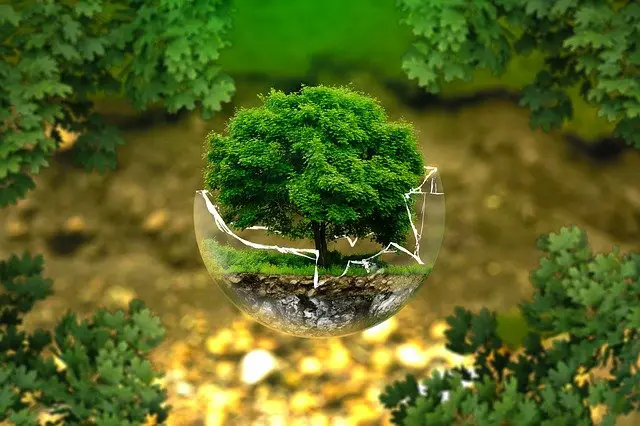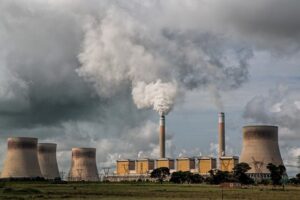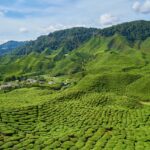
This post will look at the Human-Environment Interaction in Geography, what those 5 themes of geography are, and how Human-Environment Interaction fits into those themes.
Table of Contents
5 Themes of Geography
In 1984 the National Council for Geographic Education and the Association of American Geographers defined five themes of geography to help with teaching geography in K-12 schools. The 5 themes of geography are:
- Location – First students usually learn the locations of places and how locations correspond to other locations. Such as a city might be 4 miles away from another city.
- Place – Place describes the human and physical characteristics of certain locations. The physical characters describe whether the land is mountains, hills, flat, sandy, etc. The human characteristics describe what the people of that location are like.
- Human-Environment Interaction – This describes how the land is adapted to and modified by humans.
- Movement – How humans and ideas move across the globe or relocate.
- Region – Regions are the formal or informal dividing of lands into different identifiable areas. Examples are countries and cities.
Next, we will explore the Human-Environment Interaction theme.
Human-Environment Interaction in Geography
We’ll explore and look at the theme of Human-Environment Interaction in the 5 themes of Geography.
What is Human-Environment Interaction in Geography?
What exactly is the theme of Human-Environment Interaction in Geography? Let’s have a look.
Human-Environment Interaction Definition
The definition of Human-Environment Interaction is the way humans interact with their surroundings or ecosystem.
It’s the way they interact with the earth and its environment and make changes to that environment. At the same time, the environment can have an impact on humans. The environment can change what we eat, wear, build or do in everyday life. So, the environment impacts us and we impact the environment.
Human-Environment Interaction in a sentence, is the way that humans interact with and modify their environment.
Another definition might be, how humans adapt to their environment.
Examples of Human-Environment Interaction in Geography
We’ll look at some examples of Human-Environment Interaction next. You can find the full posts with more details at
- Examples of Human Environment Interaction in Geography
- Positive Human Environment Interaction Examples
- Negative Human Environment Interaction Examples
The Use of Natural Resources
Humans use natural resources for everyday life. Humans need food and water from the environment in order to survive. Natural resources such as wood, metal, oil, diamonds, gold, and other resources are also used for human survival and advancement. Wood might be needed to build fires and cook food for example.
The problem is that humans can overuse resources, and some of those are non-renewable such as fossil fuels. Also, the use of resources such as oil leads to pollution and climate change.
The mining of some minerals might destroy millions of acres of land in the extraction process and cause the leaking of toxins into areas nearby.
All of these are big negative impacts on the environment and the sustainability of the earth for future generations as well as having negative effects on the health of nearby people who are exposed to these practices.
The Building and Expansion of Cities and Roads
The building of homes, cities and businesses sometimes requires the use of cutting down trees and altering the land and environment. This also creates spaces where animals and plants can no longer live.
This is especially true in bigger urban cities such as New York City where so much has been covered with cement, and barely any natural green space exists anymore. This is not only destructive to the environment and animals, but it also can take a mental toll. It’s been found that green spaces and water can have a positive impact on mental health.
Roads also run through natural habitats and can alter the environment and scare away or hurt animals. Also, the exhaust caused by cars traveling on these roads has a huge negative impact on the environment. Flying as well, in airplanes as a means of transportation, produces a lot of emissions.
Pollution

Cars and factories all create pollution and toxic chemicals that are harmful to our health and the environment and the ozone layer. One of the biggest causes of concern is carbon emissions.
Transportation contributes to a third of greenhouse emissions and is responsible for killing around 800,000 people per year.
See Human Environment Interaction in Mexico City for these Human Environment Interaction examples.
Deforestation
The earth’s forests are being cut down at alarming rates. This is usually for buildings and industrial equipment, or the raising of livestock for animal food or products. This is one reason it helps to eat a Whole Food Plant-Based Diet which lowers the demand for animal foods and minimizes the use of land for raising livestock.
This deforestation leads to the extinction of certain species of animals. Also, trees are useful in keeping the air clean and improving the health of the environment. The fewer trees left, the less they are able to improve the climate.
Deforestation also contributes to soil erosion. When trees are chopped down, the soil below is exposed and easily washed away by the rain.
More Human Environment Examples
Here are some more examples and the impact that humans have on the environment.
Post Resources
Video Resources
- 5 Themes of Geography
- Human Environment Interaction definition
- Human impacts on the environment
- Human-environment relationship PDF
Lance has been passionate about the plant-based diet and we have been following a whole food plant-based diet for over 5 years. We focus on health, natural healing, weight management, animal rights, and the health of the planet and environment by focusing on whole plant-based foods and sustainable practices.
Learn more at the About Me page and follow on social media at the links below.


